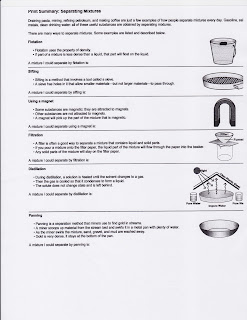ESSENTIAL QUESTION: How are mass and weight different?
RELEVANCE: Do I loose weight if I visit the moon?
NGSSS: SC.912.P.8.2; MAFS.912.N-Q.1.1; LAFS.910.WHST.1
LEARNING OBJECTIVES: Students will be able to:
-differentiate between weight and mass.
-justify why weight changes with gravitational pull.
BELL RINGER: Density problems
VOCABULARY: force, mass, gravity, weight, spring scale, balance
HOME LEARNING: HL 6 Elements, Compounds, and Mixtures Poem Interpretation
Students did density word problems as their bell ringer. You can find the handout below.
This is the bell ringer for today. Don't forget that any time the Essential Question changes, you must write the date, Benchmark, and Essential Question in your table of contents, along with the page you will be making the Cornell Notes on. Then, turing to that page, make a Cornell Notes with the data and essential question at the top. This page goes in the center section of the page.
Students received HL 6. We read the poem aloud. Students are to answer the questions based on the poem. They will keep the copy with the poem and hand in the single page. You can find a copy of HL 6 below.
This is HL 6. Read the poem and answer the questions. Only the question page is to be submitted. Be sure to write using complete sentences.
We also completed the Solubility and Temperature Gizmo Challenge, along with the accompanying CER.
Students began the Mass and Weight Gizmo. It will be continued in the next class, as we did not complete the activity.


















